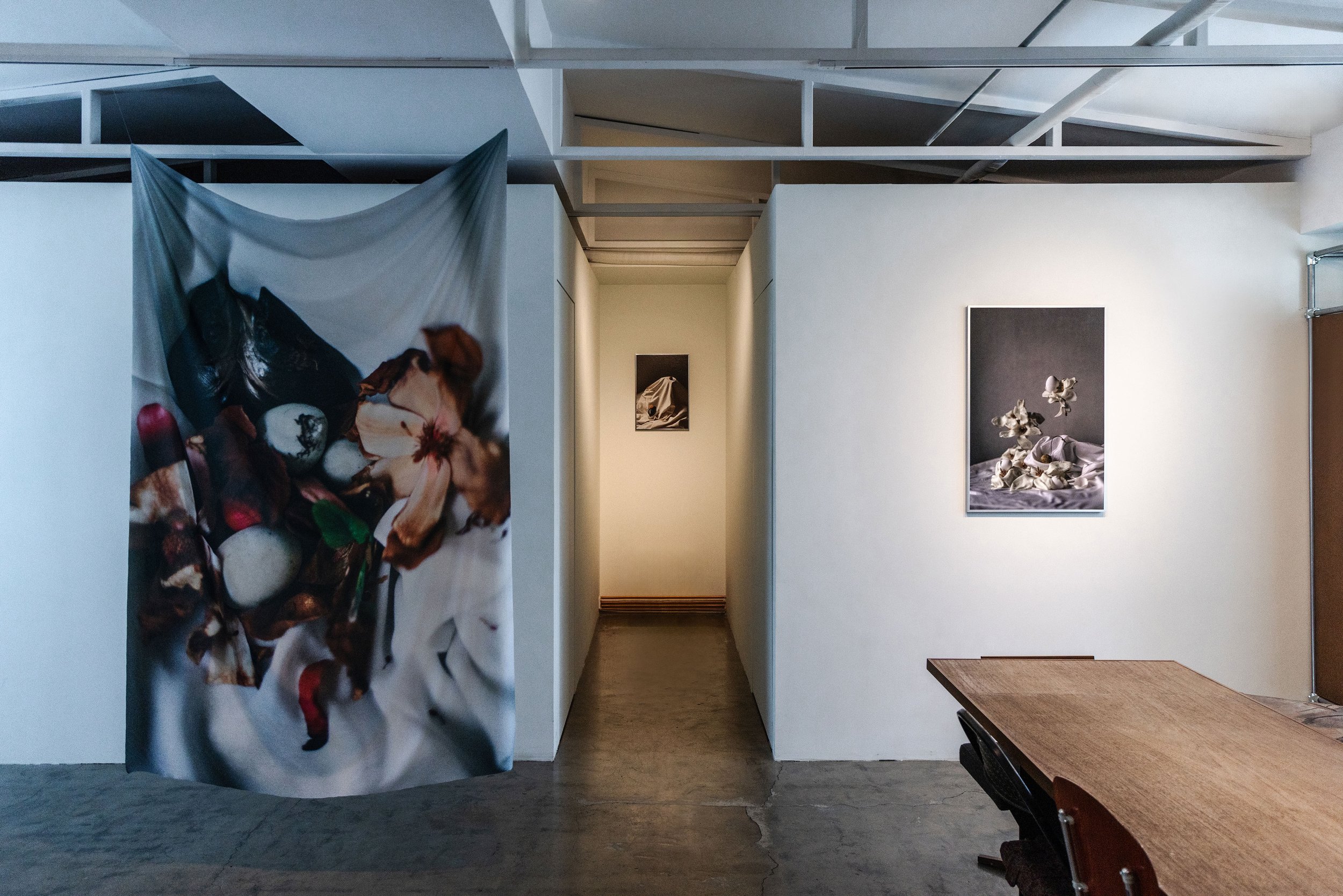
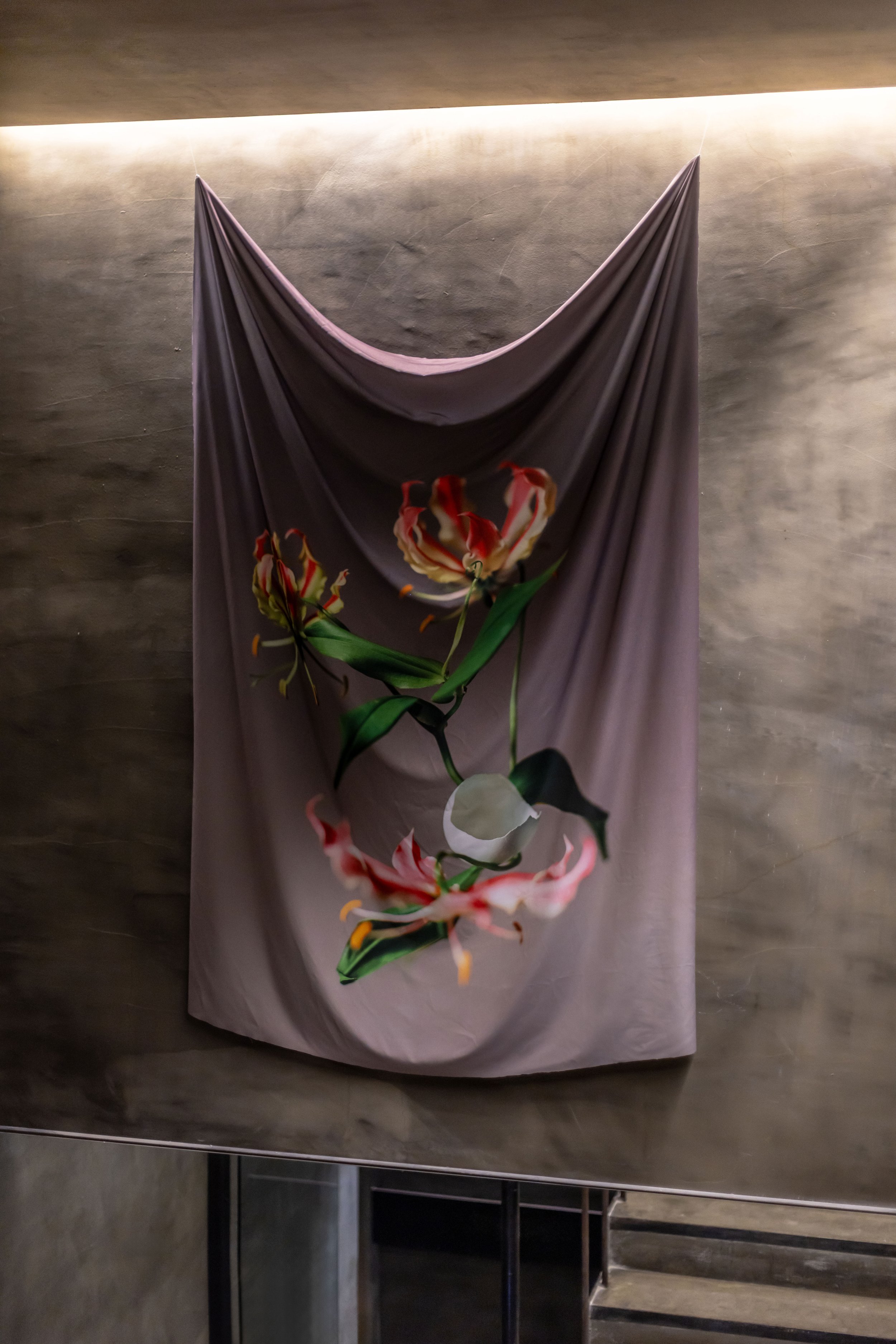
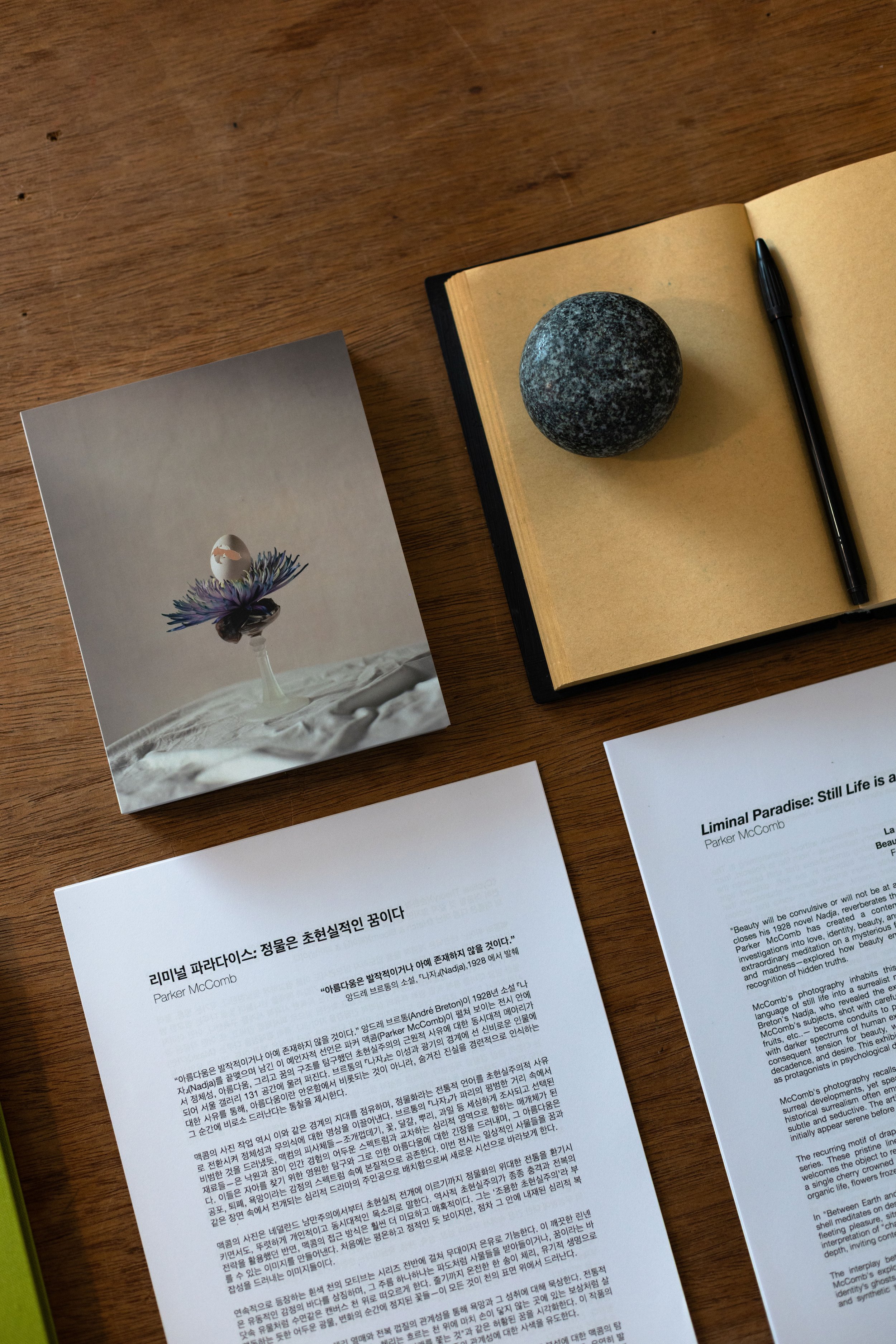




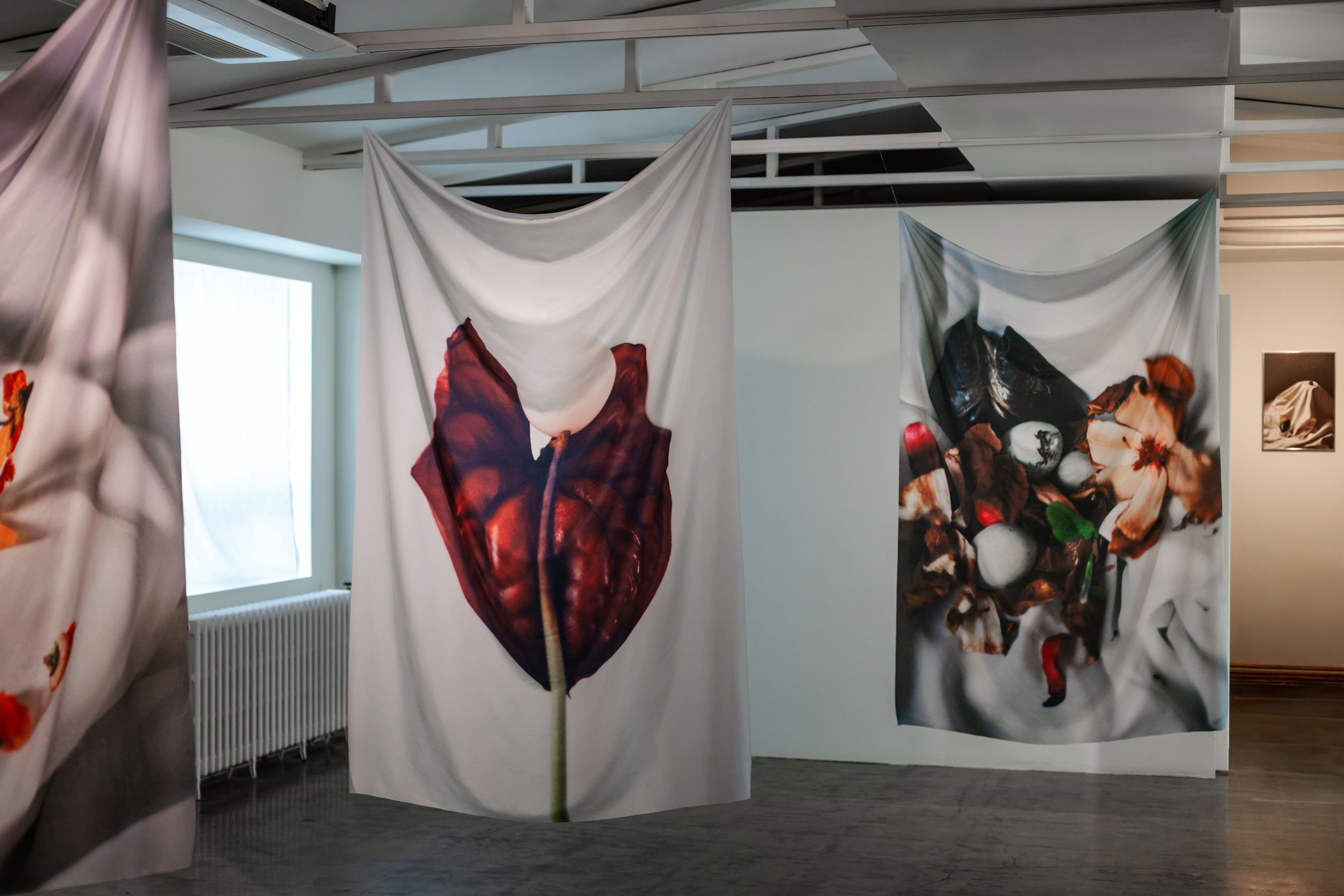
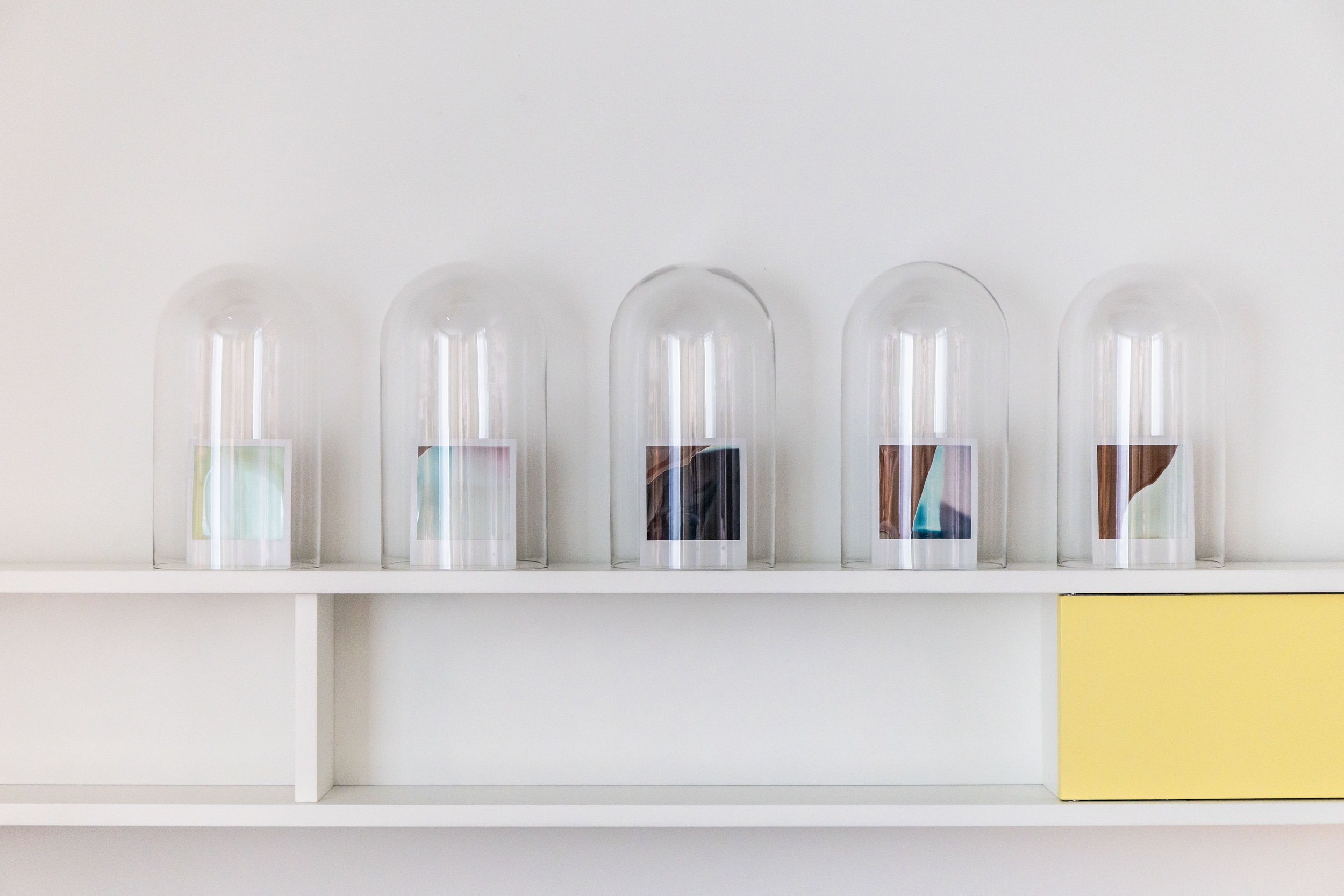

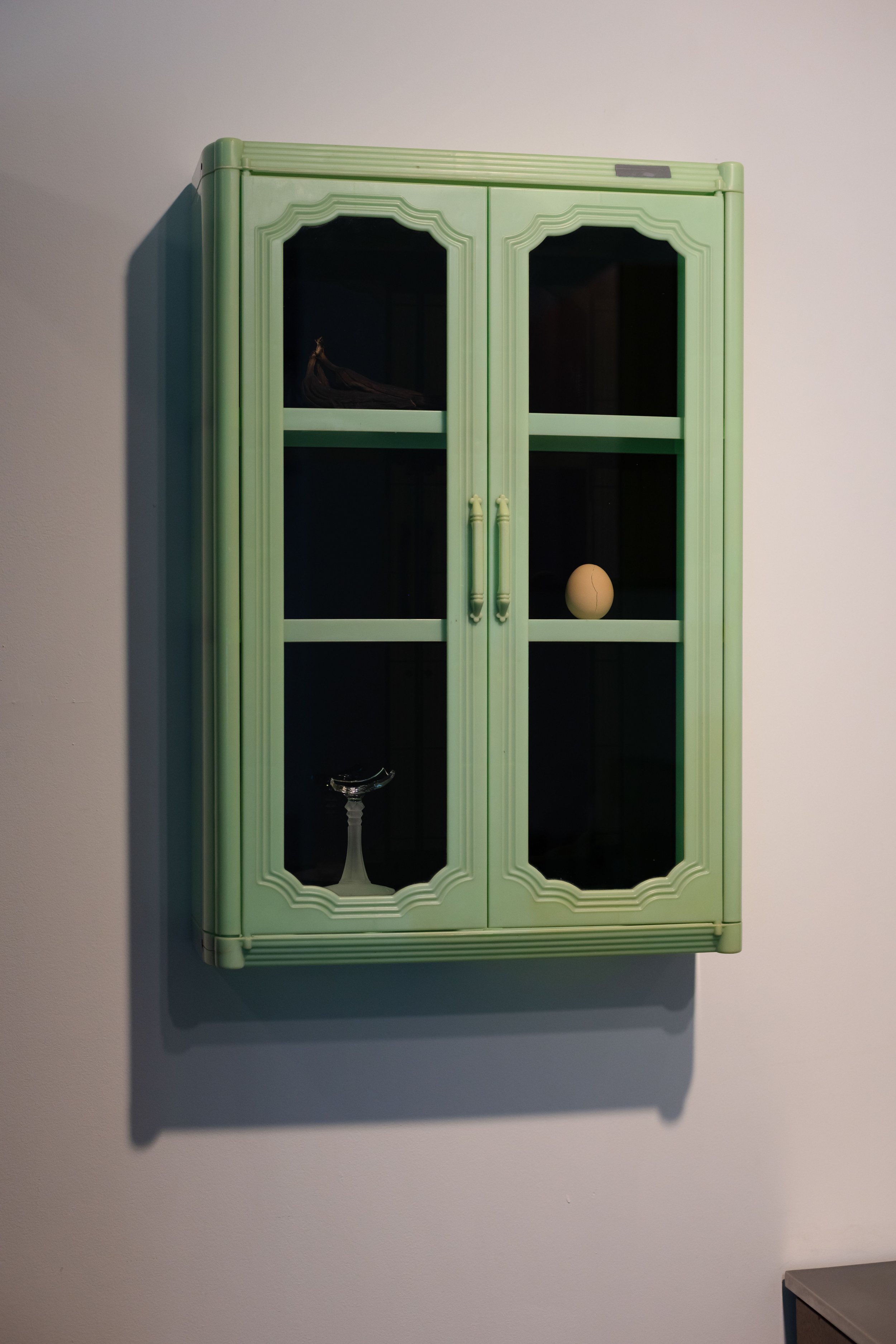
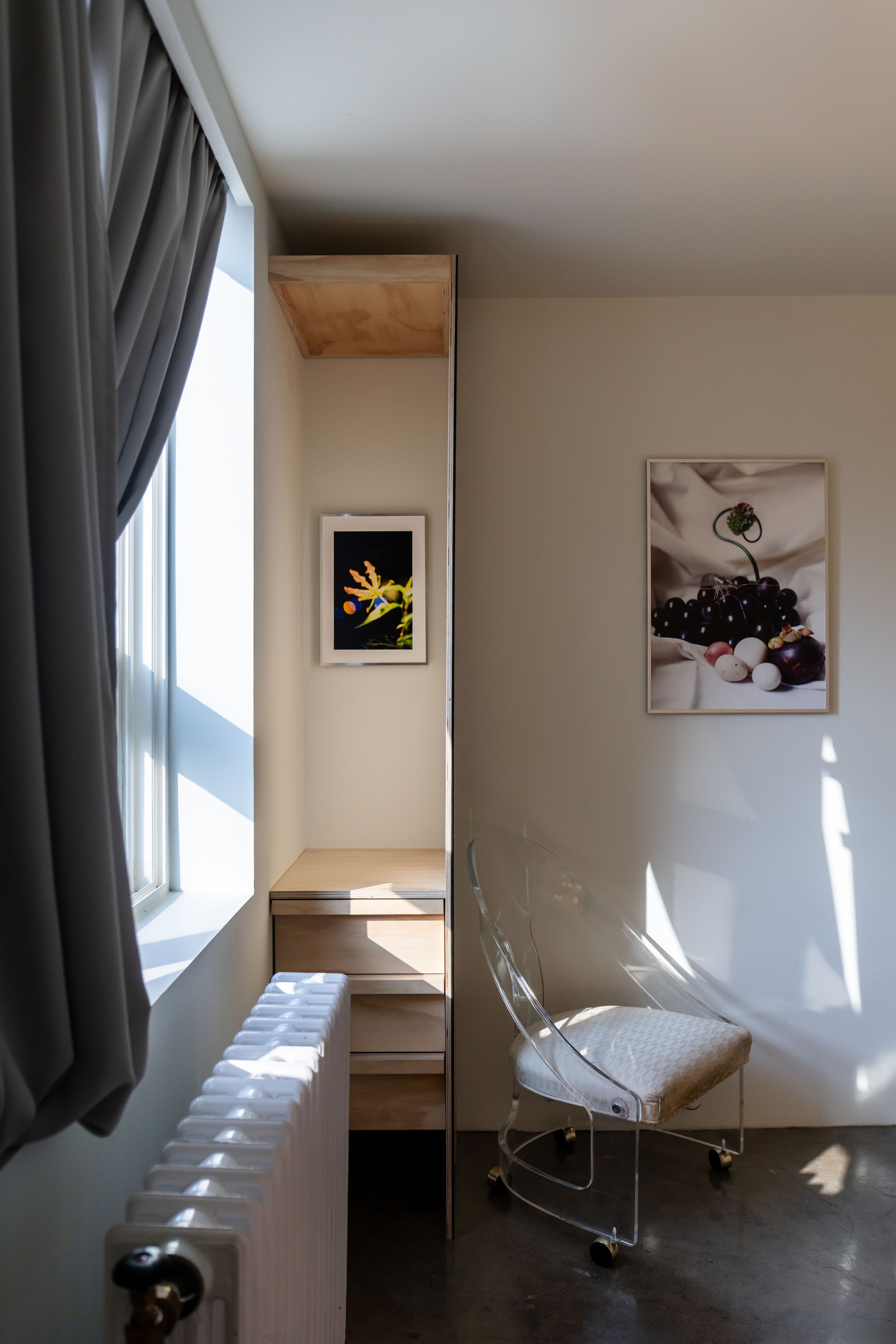
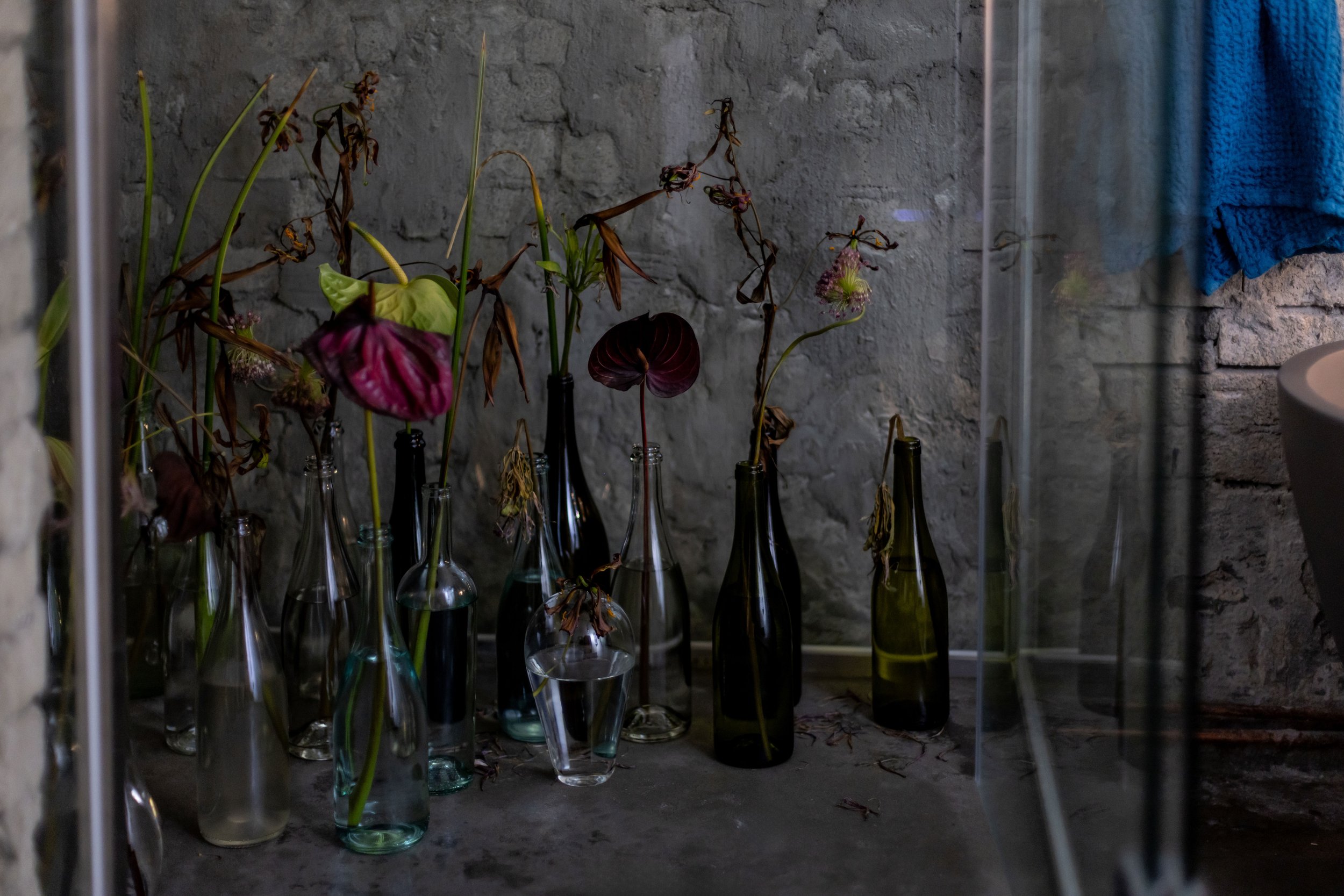

La beauté sera convulsive ou ne sera pas
Beauty will be convulsive or will not be at all
From Nadja, a novel by André Breton (1928)
Text by Valentina Buzzi
Independent Curator
"Beauty will be convulsive or will not be at all." André Breton's prophetic declaration, which closes his 1928 novel Nadja, reverberates through the spaces of Gallery 131 in Seoul, where Parker McComb has created a contemporary echo of surrealism's most profound investigations into love, identity, beauty, and the architecture of dreams. Breton's Nadja—that extraordinary meditation on a mysterious figure who existed at the threshold between reason and madness—explored how beauty emerges not from comfort but from the convulsive recognition of hidden truths.
McComb's photography inhabits this same liminal territory, transforming the traditional language of still life into a surrealist meditation on identity and the unconscious mind. Like Breton's Nadja, who revealed the extraordinary lurking within the ordinary streets of Paris, McComb's subjects, shot with carefully researched ingredients — shells, flowers, eggs, roots, fruits, etc..— become conduits to psychological realms where paradise and dream intersect with darker spectrums of human experience, connecting the eternal quest of oneself, and its consequent tension for beauty, which intrinsically coexists within the spectrum of horror, decadence, and desire. This exhibition presents a body of work that positions everyday objects as protagonists in psychological dramas that unfold in dreamlike tableaux.
McComb's photography recalls the great tradition of still life, from Dutch romanticism to its surreal developments, yet speaks with a distinctly personal and contemporary voice. Where historical surrealism often employed shock and displacement, McComb's approach is more subtle and seductive. The artist creates what might be called "quiet surrealism"—images that initially appear serene before revealing their deeper psychological complexity.
The recurring motif of draped white fabric serves as both stage and metaphor throughout the series. These pristine linens represent a fluid ocean of feelings; each fold, like a wave, welcomes the object to rest upon or emerge from the textile canvas like artifacts from dreams: a single cherry crowned with its stem, dark mineralogical specimens that seem to pulse with organic life, flowers frozen in moments of transformation.
In "Between Earth and the Heavens," the relationship between a cherry fruit and an abalone shell meditates on desire and its fulfillment. The cherry, traditionally symbolic of temptation and fleeting pleasure, sits atop flowing fabric like a reward just out of reach—McComb's visual interpretation of "chasing rainbows." The composition's stark simplicity belies its psychological depth, inviting contemplation of our relationship with longing and satisfaction.
The interplay between organic and synthetic materials throughout the exhibition reflects McComb's exploration of identity's dual nature. Natural elements, evocative symbols, and identity’s ghosts exist alongside manufactured objects, found frames, sculptural counterparts, and synthetic textiles, creating hybrid compositions connecting two layers and realms of existence that mirror our state of in-betweenness. This tension becomes particularly evident in works like “Cyclical Theory", where an egg and a purple lavender flower form an unlikely alliance, suggesting the fertile ground where identity germinates. Nevertheless, the series name is “Hatch & Bloom”.
McComb's technical mastery serves the conceptual framework without overwhelming it. The photographer's use of light and different photography techniques – from film to Polaroid, from digital to print – is particularly sophisticated, creating atmospheres that shift between the clinical and the mystical. Some images bathe their subjects in the soft, diffused light reminiscent of 17th-century Dutch still lifes, while others employ dramatic chiaroscuro that recalls the psychological intensity of independent cinema, especially in works that explore one’s identity, such as the Mask series. This varied approach reinforces the exhibition's central theme: the spectrum of human experience from light to shadow, consciousness to subconsciousness.
Once installed in the gallery, the works exist both as individual photographs and as components of a larger visual narrative. Some images are presented as traditional prints, others in conversation with found objects, while the central pieces are printed onto flowing fabric, creating layered viewing experiences that mirror the layered nature of memory and perception. This hybrid approach reflects how we process experience in the digital age—simultaneously concrete and ephemeral, fixed and fluid.
The color palette throughout the exhibition moves between extremes: the monochromatic purity of the draped studies contrasts with the vibrant, almost psychedelic hues of "Disco Heaven Study 001." This chromatic range suggests the full spectrum of psychological states, from the meditative calm of suppressed memory to the explosive energy of creative breakthrough. The disco ball, suspended in ethereal green and yellow light, becomes a perfect metaphor for McComb's artistic process—fragmenting and reflecting reality into countless facets, each revealing different aspects of our truths and dreams.
Nature plays a crucial role in McComb's visual vocabulary, but its nature removed from its familiar context and repositioned in psychological space. The flowers in "Balancing Power", “Divination”, and "Angel Wings" exist in a state of perpetual transformation, caught between bloom and decay, beauty and dissolution, connecting with that historical concept of vanitas in still life which would symbolise the transience and futility of all things, a tension on the impermanence of life, mirroring our cycles of growth, maturation, renewal, and death.
What emerges from this body of work is not a singular vision of identity or consciousness, but rather an acknowledgment of multiplicity. McComb suggests that the self is not a fixed entity but a fluid collection of experiences, desires, and memories that exist simultaneously across different levels of awareness. The "dark spectrum" referenced in the artist's statement is not darkness as absence, but darkness as potential—the rich, fertile void from which all possibilities emerge.
Ultimately, McComb's work offers a different kind of engagement for the audience: his works require slow looking, patient contemplation, and the willingness to enter into dialogue with one's own subconscious responses. They remind us that the most authentic paradise is found not in the light, but in the spaces between certainty and doubt, reality and dream.





















Facing: Identities
SLIT presents, Parker McComb’s solo exhibition, Facing: Identities September 17 to October 18, 2021.


